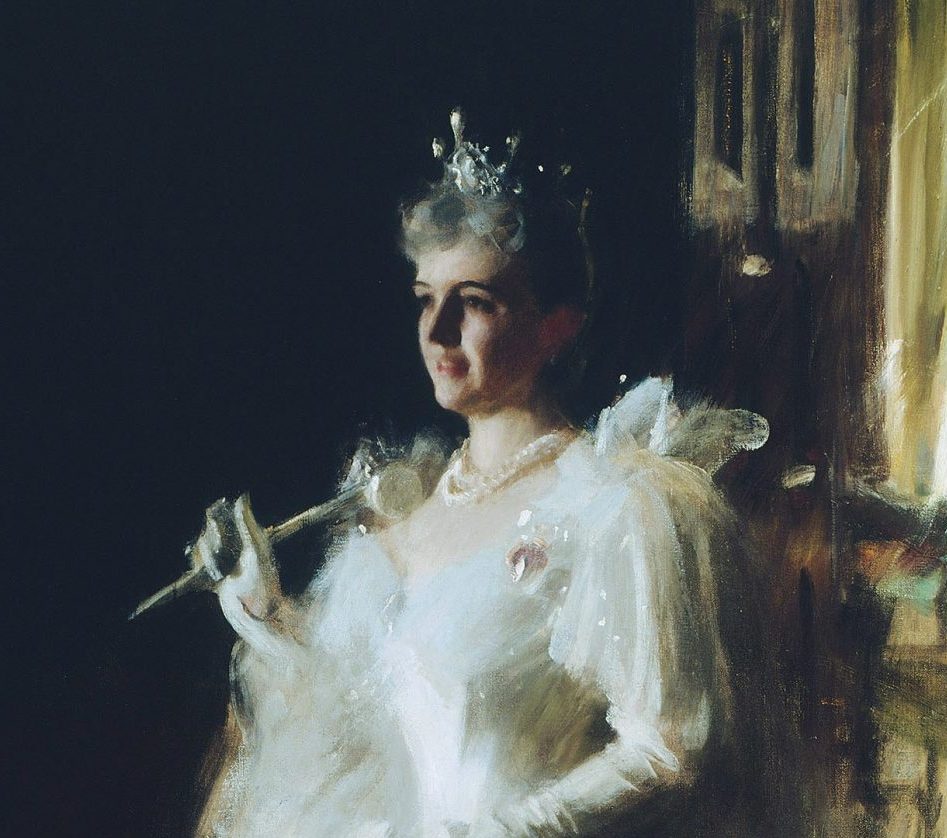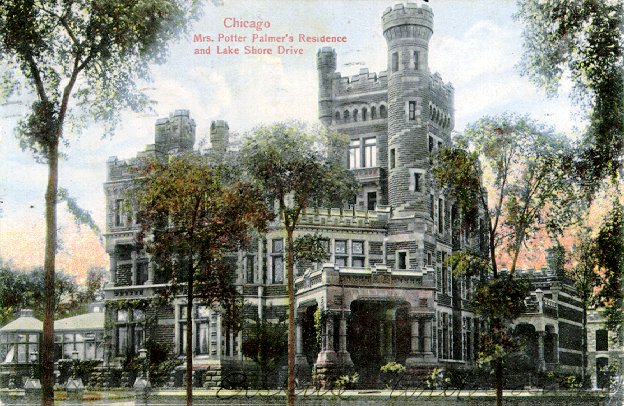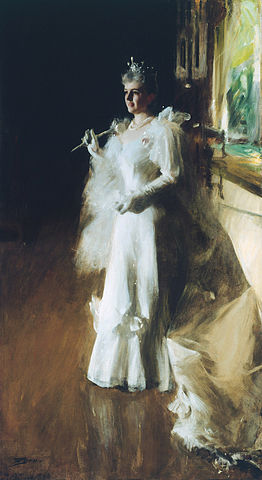
Meet Bertha Palmer, the “Queen of Chicago Society”
Published on March 30, 2023
In honor of Women’s History Month, we’re pleased to feature Bertha Palmer, one of the most accomplished American women of her day.
By Dave Lifton (@daveeatschicago)
Behind the pollution-filled air and chaotic streets of 19th century Chicago was wealth and elegance. And it was exemplified by Bertha Palmer.
She was born Bertha Matilde Honoré on May 22nd, 1849 into a wealthy Kentucky family of French descent. Her father, Henry Hamilton Honoré, relocated his family to Chicago when Bertha was six and bought undeveloped land on the West Side. Honoré Street (1828W in Chicago’s grid) is named for him.
Due to her status, Bertha received an elite private education. When she was 13, Potter Palmer, a successful dry goods store owner, visited the Honoré house at 231 S. Ashland Ave., where he met Bertha. Despite a 23-year age difference, he was struck not just by her beauty but her intelligence and charm. Palmer asked her father if he could call upon her when she was of age. Mr. Honoré consented.
Bertha continued her education at the Convent of the Visitation in Washington, DC, where she graduated in 1867 with honors in many subjects. While she was away, Potter decided to get out of the retail business for health reasons and set off for a three-year recuperation in Europe. Upon his return to Chicago in 1868, he began courting Bertha, now 21.
In reporting their 1870 marriage, the Chicago Tribune said that Bertha had refused a gift of $1 million. Instead, Palmer built his bride a hotel. The first Palmer House opened at State and Quincy on Sept. 26th, 1870, two months after they had wed, at a cost of $3.5 million.
Little more than a year later, the Great Chicago Fire destroyed 95 percent of Potter’s holdings, including the Palmer House. Distraught, he considered leaving the city, but she convinced him to remain, telling him that it was “the duty of every Chicagoan to stay here and devote his fortune and energies to rebuilding this stricken city.” The second Palmer House opened in 1873 at State and Monroe, and the couple lived there until “The Castle,” their mansion on the newly created Lake Shore Drive, was completed in the mid-1880s.

A postcard of the Palmer Mansion in Chicago, Illinois. The mansion was demolished in 1951.
As Mrs. Palmer, Bertha befriended European royalty and nobility and spent extravagantly on clothes, jewelry, and art. She was one of the first Americans to champion French Impressionism, and her collection included numerous works by Monet, Renoir, Degas, and Pissarro. According to one story, Potter’s will contained a clause giving a large sum of money to her next husband “Because he’ll need it.”
But she also understood that her privilege came with the responsibility to help the downtrodden. Bertha donated to Jane Addams’ Hull-House, lobbied on behalf of working and incarcerated mothers, and met with factory girls to learn how to improve their lives. She stopped short of suffragism, however, because their militant rhetoric clashed with her Southern gentility.
With the World’s Columbian Exposition coming to Chicago in 1893, Bertha became the natural choice to be the president of the Board of Lady Managers. She oversaw every aspect of the Women’s Building, from its design—she insisted on a woman architect (Sophia Hayden)—to approving the exhibits of works by women from 47 countries. Palmer even directed the Palmer House’s pastry chef to create a confection for boxed lunches at the Women’s Building: the brownie.

Seven years later, Bertha was named as the only woman to the American delegation for the Paris Exposition, another World’s Fair. Her lineage and fluent French served her well, and she was awarded the Legion d’Honneur. However, she declined, saying it was improper for an American woman to be decorated by a foreign government.
She inherited Potter’s estate—estimated at $8 million—upon his 1902 death. After a year of mourning, she resumed her lifestyle. She bought homes in London and Paris, returning to Chicago only for the winter, where her annual New Year’s Eve charity ball at The Castle was the social event of the season.
In 1910, Bertha bought 140,000 acres in and around Sarasota, Fla., and began wintering in the Sunshine State. Not content to retire, she consulted with local scientists on the best methods to turn the swampy terrain into profitable land for crops and cattle. Through her intelligence, the value of the estate she inherited from Potter doubled.
Although her home, The Oaks in Osprey, Fla., was decorated in the same luxurious manner as the Castle, she adopted a more casual lifestyle, with the opulence only coming out for major social occasions. She died May 5th, 1918 at The Oaks, and her body was returned to Chicago. She’s buried next to Potter in Graceland Cemetery.
Although she was born into wealth and married a successful man, Bertha Palmer’s accomplishments were her own. Her legacy lives in Chicago at the still-exquisite Palmer House and the Art Institute of Chicago, to whom she bequeathed her famous art collection.

The Adventure starts when you say it does.
All eATLAS Adventures are designed and built by experienced eATLAS Whoa!Guides. They're always on. Always entertaining. And always ready to go.
Check out our Adventures!